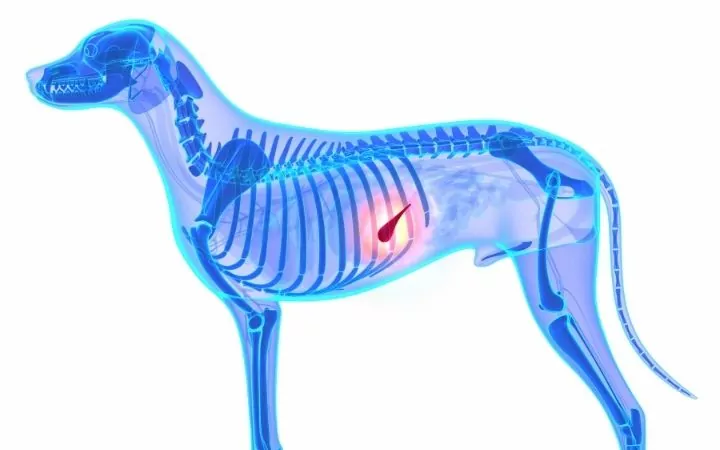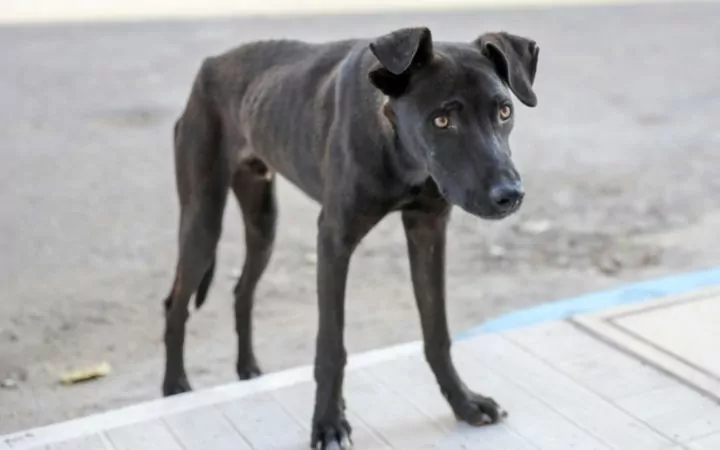Defining the Exocrine System and the Endocrine System
Exocrine and endocrine are possibly words you’ve heard of but might not fully know what they mean. These words are both talking about secretions and are differentiated by where the products are secreted.
If the product is secreted into the blood, this is endocrine (meaning inside). The endocrine system is what we think of as the hormones in the body.
If the products are secreted onto epithelium, this is exocrine (meaning outside or external). The exocrine system includes any type of secretion outside the blood, including sweat, saliva, and milk.
The Exocrine and Endocrine Functions in the Pancreas of Animals

The pancreas (an organ inside the abdomen) has both an endocrine and exocrine component.
The endocrine pancreas produces two main hormones, insulin and glucagon. These are responsible for maintaining blood sugar. A problem with either of these hormones will make the blood sugar too high or too low, the most common disease we see with dysfunction of the endocrine pancreas is diabetes.
Most commonly, the endocrine pancreas becomes damaged from being attacked by the immune system or from repeated bouts of inflammation (pancreatitis).
The exocrine pancreas is responsible for producing secretions (digestive enzymes) which are responsible for digesting proteins, carbohydrates and fats. The exocrine pancreas also produces other essential substances such as bicarbonate which helps to buffer the acid produced by the stomach.
Dysfunction with the exocrine pancreas can be seen in diseases such as exocrine pancreatic insufficiency (EPI) and pancreatitis. Pancreatitis (inflammation of the pancreas) can be caused by abdominal surgery or scavenging and eating fatty foods.
The Main Endocrine Glands in Animals
There are eight main endocrine glands in the body. Depending on the sex of the animal, the eighth is either the ovaries or testes.
- Hypothalamus is in the brain. It produces many vital hormones, such as those responsible for growth.
- Pituitary gland is also found in the brain, and it produces hormones that have effects all over the body, such as growth and blood pressure.
- Pineal gland is also found in the brain and is responsible for making animals sleep.
- Thyroid glands are found in the neck near the trachea. These produce hormones involved in metabolism.
- Parathyroid glands are found next to the thyroid glands. These help to maintain calcium levels in the body.
- Adrenal glands are found near the kidneys. The adrenal glands produce many hormones, including adrenaline.
- Pancreas, as mentioned above, it is responsible for hormones involved in blood sugar.
- Ovaries produce female sex hormones (estrogen and progesterone) and help develop female animals and pregnancy.
- Testes produce male sex hormones (testosterone) and help with development in male animals and the production of sperm.
The Main Exocrine Glands in Animals

There are many exocrine glands in the body. The list below is an example of some of them:
- Salivary glands are found in the mouth and produce saliva to help swallow and digest food.
- Sweat glands are found under the skin and produce sweat to help cool animals and remove waste products.
- Mammary glands are found in both males and females in the mammary tissue. They produce milk for offspring when the mother is lactating.
- Sebaceous glands are found under the skin and produce sebum. This helps moisturize the skin and fur in animals.
- Prostate is only found in male dogs. It helps produce fluid that nourishes and protects sperm.
- Lacrimal glands are found in the eye and produce tears to keep the eye lubricated.
- Pancreas, as mentioned above the pancreas produces secretions that aid in digesting food.
- Stomach, there are secretory glands in the gut that produce gastric juice to help digest food.
Pathogenesis of Endocrine Diseases in Animals

The endocrine system in animals can be affected in many ways. Diseases that result from dysfunction of the endocrine system can be due to overproduction or underproduction of hormones.
Overproduction usually involves a tumor or hyperplasia (enlargement) of an organ that produces hormones. Treatment varies depending on the disease and can involve medical or surgical involvement such as medicine, chemotherapy, or removing the affected organ.
Common examples of this we see in animals include:
- Cushing’s Disease occurs when too much cortisol is produced. This can be caused by a problem with the pituitary gland or adrenal gland. Cushing’s is most commonly seen in dogs. We can also see signs of Cushing’s in dogs that are given steroids as a medical treatment. When it’s caused by medicine, we call this iatrogenic.
- Hyperthyroidism occurs when the thyroid glands become hyperplastic and begin to overproduce thyroid hormones. This disease is most commonly seen in middle age to geriatric cats.
- Apocrine gland adenocarcinoma is a type of severe cancer in the anal glands. The tumor produces a hormone that resembles a parathyroid hormone and mimics its activity in the body, leading to hormone changes that increase the body’s calcium levels.
The underproduction of hormones is usually seen when the body’s immune system attacks the hormone-producing cells in the endocrine glands. Too few hormones are typically able to be supplemented, but when the body has destroyed the gland, it is rarely reversible.
Examples of diseases caused by the underproduction of hormones are as follows:
- Addison’s occurs when the immune system destroys the adrenal gland. This can be a life-threatening condition but usually responds well to treatment. Addison’s is most commonly seen in dogs.
- Hypothyroidism occurs when the thyroid gland produces too little thyroid hormone. The thyroid gland is destroyed by the animal’s immune system leaving no cells left to produce thyroid hormone. This occurrence most commonly affects dogs.
- Diabetes mellitus in cats and dogs is most commonly caused by the body no longer producing insulin. This is caused by the destruction of the pancreatic endocrine cells. This can be seen in dogs and cats. Diabetes mellitus can also be caused by the body no longer being responsive to insulin despite enough being produced. This is only seen in cats.
EPI in Animals

We have an entire article devoted to explaining EPI in dogs here.
In short, exocrine pancreatic insufficiency occurs when the part of the pancreas producing exocrine secretions becomes damaged.
This leads to dysfunction in digestion, and you may see diarrhea and weight loss in your pet. Treatment involves feeding digestive enzymes as a supplement to replace those missing in the body.
With treatment, EPI can be well managed, but the exocrine pancreas’ function will never return, so treatment is lifelong.
Summary
The endocrine and exocrine systems are vital to the health of our pets. These systems help maintain a stable internal environment in the body (homeostasis). They are often not noticed until something goes wrong, but it can be life-threatening without medical intervention when it does.
